Berries and herbs tend to grow slowly, and because of our short growing season here, are best cultivated from starts, which are available now at garden centers, farmers markets, supermarkets and hardware stores. If you try to grow these from seed, well, it might be winter before you see anything! Keep in mind that container plants in general are considerably more exposed to the elements, (heat, cold, moisture and dryness) than plants in the ground. In Colorado it’s advisable to go with plastic pots which won’t evaporate water as quickly than the porous earthen terra cotta pots. (That being said, there’s good news for diehard terra cotta lovers – Sturtz & Copeland in Boulder, 303-442-6663, is now carrying a line of waterproof German terra cotta that will work just as well as plastic.)
Herbs
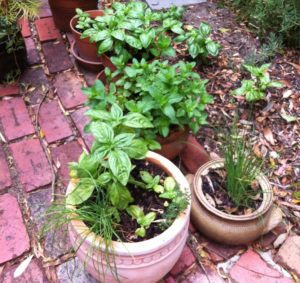
Herbs in general can tolerate our hot and dry Colorado summers and because of that are great for beginning gardeners. Thyme, oregano, rosemary, basil and lavender are ideally planted outside in mid-May after the last frost. These herbs (with the exception of basil) can also be put outside prior to mid-May but they will likely be dormant and are at some risk for cold shock. Basil is the most cold-sensitive of these herbs and you’ll need to keep it indoors until night temperatures no longer drop below 55 degrees. Parsley, dill, cilantro, sage, chives and garlic chives can be put out now and should grow. Cilantro likes it cool, so you might want to consider replanting cilantro like you will with lettuces and greens, as cilantro can bolt and turn into coriander. Parsley also does better when it’s a little cooler. Most herbs, however, love light and the heat is generally not a problem. Although there are a few exceptions, herbs should generally have thoroughly drenched soil that then dries out a bit. Cilantro and dill can tend to wilt without enough water, while the other ones don’t mind a little bit of drought.
Berries
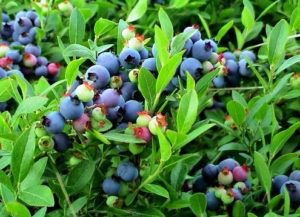 There’s nothing like the sight and taste of red, blue or “black” berries on your deck – it’s so tempting to pick them one by one as they ripen, and kids especially love them. Container berries can be started inside if you have enough indoor light, and put outside after May 15, generally the last frost. Berries typically thrive in full sun and moist (not wet) soil, and those in containers need even more water than those in the ground. Check for watering by inserting a finger into the soil down to the first joint. Make sure your pot has drainage holes because the roots will rot when sitting in water.
There’s nothing like the sight and taste of red, blue or “black” berries on your deck – it’s so tempting to pick them one by one as they ripen, and kids especially love them. Container berries can be started inside if you have enough indoor light, and put outside after May 15, generally the last frost. Berries typically thrive in full sun and moist (not wet) soil, and those in containers need even more water than those in the ground. Check for watering by inserting a finger into the soil down to the first joint. Make sure your pot has drainage holes because the roots will rot when sitting in water.
Larger pots are advisable for several reasons. First, berries tend to have substantial root systems and larger pots afford the roots ample room to grow. Larger pots are also slower to dry out, and finally, they allow for stakes and trellising systems that are structurally sound.
Blackberries, and some types of raspberries, typically will not bear fruit the first year, so make sure you know what to expect when you’re planting. Check out this article from Better Homes and Gardens for details on growing different types of berries in containers
Berry good – now get planting! And please stay in touch – we’d love to hear how your on deck gardens are growing, or better yet, send us some pics!


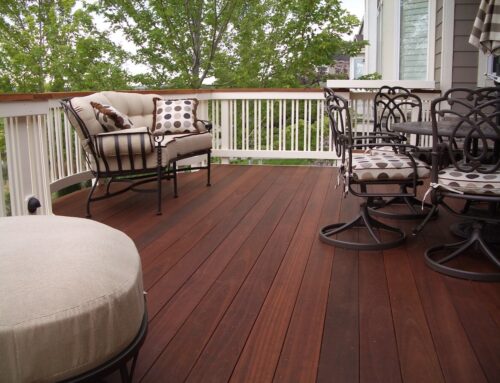
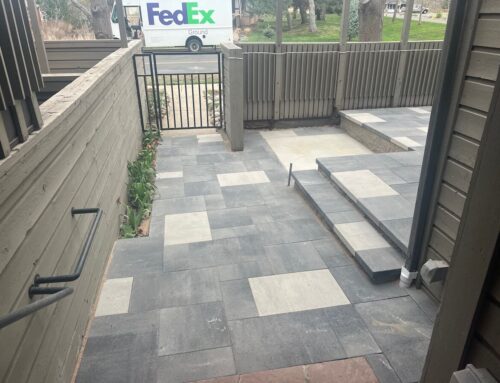

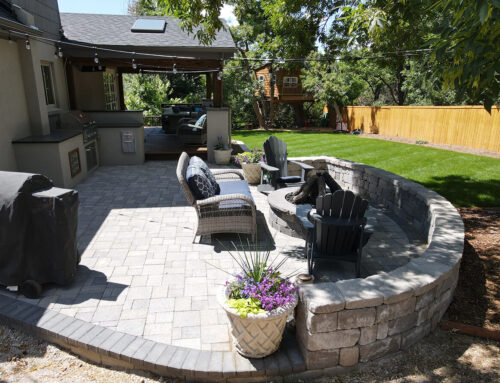
Leave A Comment